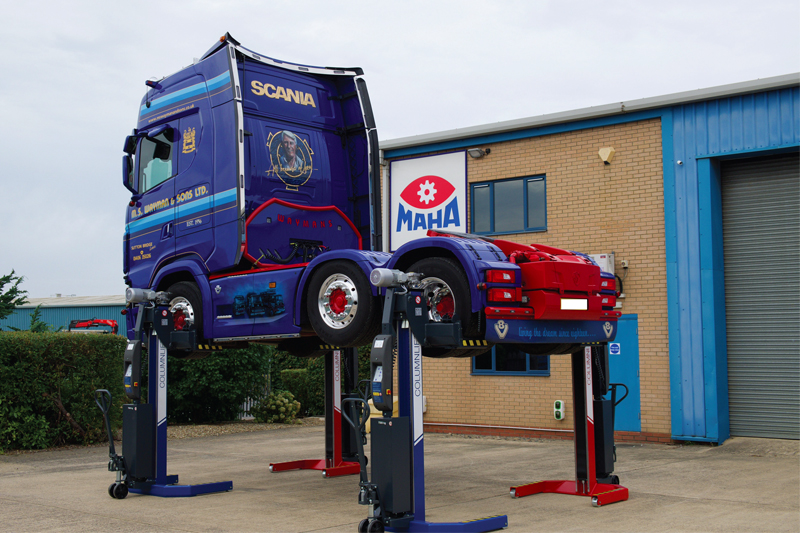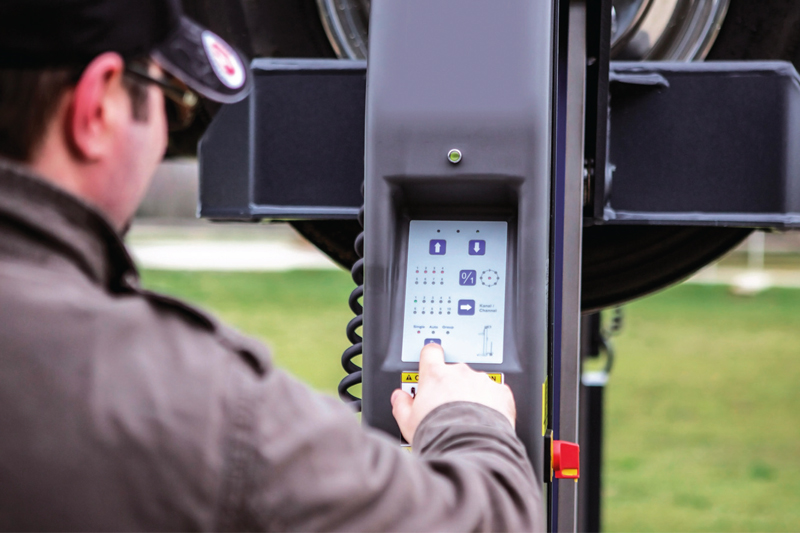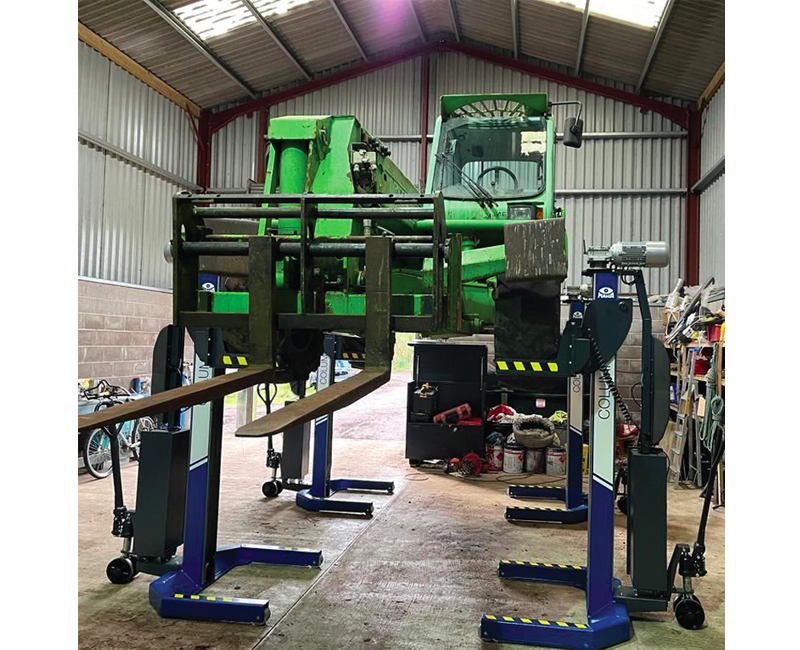
Safety in the workshop should be the number one priority says Nick Austin, sales manager, MAHA UK. Here he offers a few pointers on what to do and not to do when working with lifts.
Lifting equipment needs to be assessed by a professional every 6 months, in accordance with Lifting Operations and Lifting Equipment Regulations 1998 legislation. That same equipment also needs to be maintained regularly, the frequency of which is set out by the manufacturers’ recommendations in keeping with Provision and Use of Work Equipment Regulations 1998. Not doing so can lead to investigation by the Health and Safety Executive, then, if culpable, fines and even imprisonment, depending on the severity of the respective issue.

Irresponsible users are not only putting the vehicles they’re working on in danger, but also their employer’s reputation. More importantly, they’re endangering themselves and their colleagues.
Two-post lift guidance
Sadly, we are still seeing scenarios where correct maintenance procedures for lift pads and arm locks, as well as the use of appropriate adaptors, are not taking place.
Despite the risks, you still notice deteriorated rubber pads on the ends of lifts where steel is then exposed. The whole point of the pads is to provide suitable contact with the vehicle to avoid it slipping off.

The solution to that is checking the pads regularly and replacing when necessary.
Replacement rubber pads are readily available and not expensive to replace, so why take the risk?
Over time arm locks can weaken, due to wear and tear and considerable use, but misuse is also a common problem. The arm lock mechanism on any two-post lift is one of the most important safety features and should be checked for correct function before and during every use. Correct positioning and locking of the arms are very important.
It’s also not unheard of to see technicians use a two-post lift without the correct adaptors; instead, they use blocks of wood!
Rather than have a 200mm sleeve to reach the chassis or use a U-shaped adaptor that goes each side of the chassis, like an anti-slip sleeve – the rubber pad comes off and the anti-slip goes on – we continue to see an ordinary two-post lift with a great big oily block of wood between the vehicle and the lift pad, which is completely unsafe!

Once again, this issue can be easily avoided – there are so many adaptors available – but as workshop managers are under pressure to get a vehicle up in the air, a block of wood is a solution!
It’s important that operators are provided with the right adaptors, as it is vital to ensure the safe and effective use of a two-post lift. Once again, it’s a safety issue and could lead to serious consequences if an incident occurs. Like the rubber pads, they’re not expensive and certainly not as expensive as a new two-post lift!
There are many types of adaptors on the market, for a variety of vehicles including EVs. By locking onto the chassis via a locating hole or dedicated position along the sill, they offer increased stability to prevent slip, so why buy a lift but not the adaptors?
Critical issues
Switching the focus to mobile column lifts, but maintaining the emphasis on safety, following the correct maintenance procedures for the wheels, hydraulic dolly and fork locks, as well as the use of correct adaptors, are all vital in preserving safety and longevity of this type of equipment.
Regular visual inspection, the testing of safety components and replacing when necessary is the obvious solution – but not always followed! It’s critical this approach is adhered to.

The fork lock mechanism fitted to mobile column lifts is a critical safety feature. It should be checked for correct function before and during every use. Correct positioning and locking of the forks are of paramount importance.
Furthermore, though robust, moving the lifts carelessly or on rough surfaces can cause wear/damage to the wheels. Also, lifting a vehicle before fully lowering the dolly can cause premature wear and damage to components.









